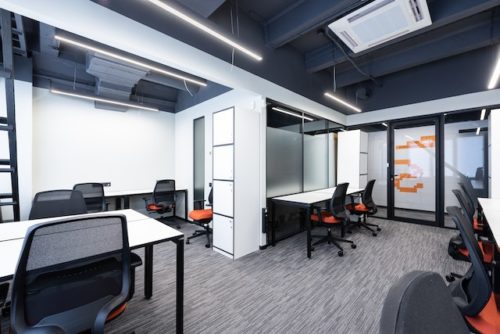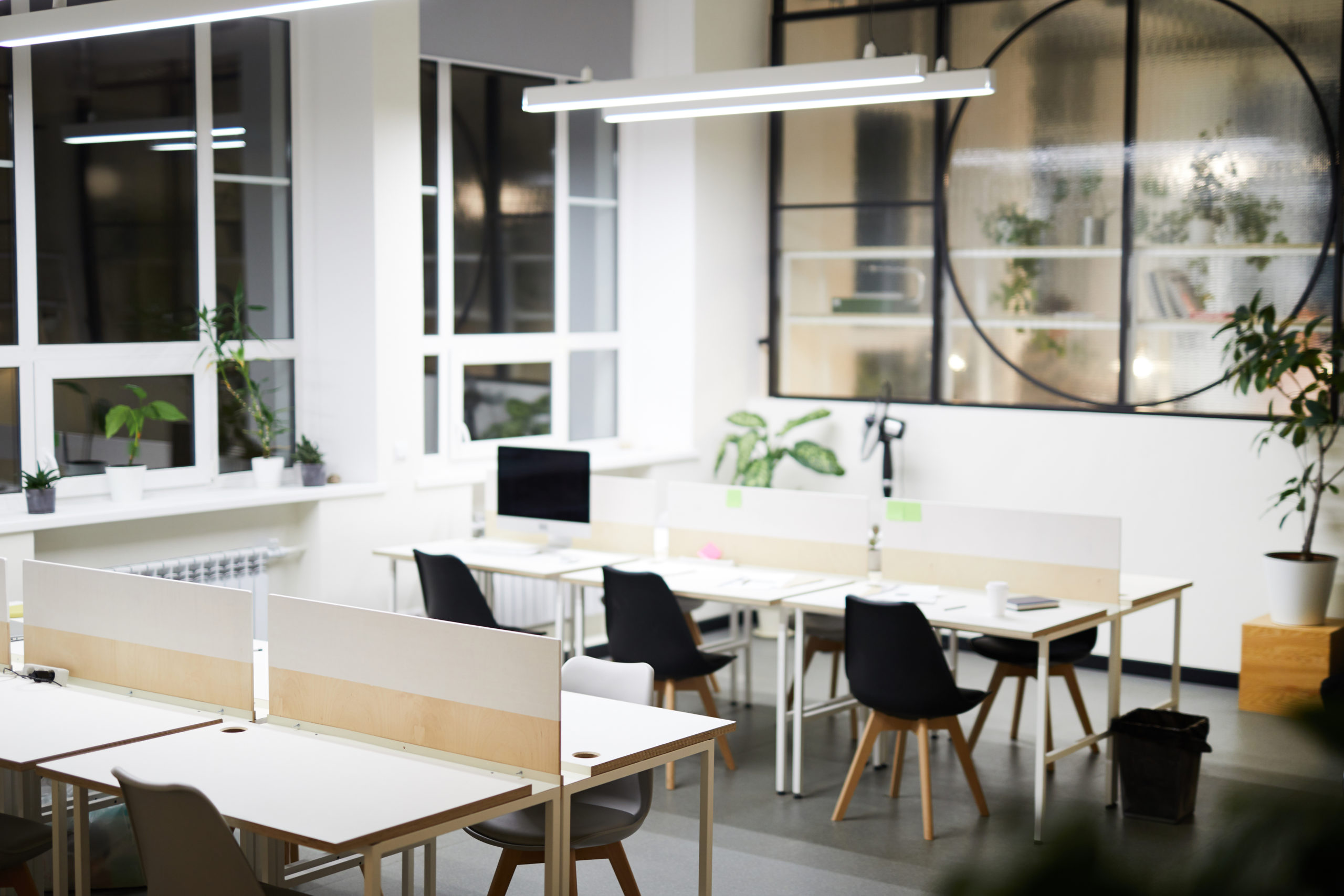Do you want to feel energized and productive in your office? It might be time to take a closer look at your lighting setup. Studies have shown that proper lighting can have a significant impact on productivity, comfort, and even mood. But with so many options available, it can be overwhelming to figure out which lighting setup is the best for you. In this blog post, we’ll guide you through the process of choosing the right office lighting setup for your needs. Whether you’re working from home or in a traditional office setting, we’ll cover everything from the type of light to the placement of your fixtures. By the end, you’ll have a better understanding of how to create a comfortable and productive workspace that’s perfectly lit for your needs.
What to Pay Attention for?
Standards
According to the U.S. General Services Administration (GSA), the minimum standard office lighting for businesses in the United States is 500 lumens per square meter. To put this in perspective, each 6’x6′ (or 36 square-foot) space should receive the same amount of light as a 35-watt incandescent bulb. Most desk lamps, which use a 60-watt bulb and produce 800 lumens, provide more light than the GSA’s minimum requirement.
Light Type
For large open spaces such as most office environments, fluorescent or LED bulbs are recommended, although halogen and incandescent bulbs are also available. Fluorescent bulbs are commonly used because they are an older technology, but LED bulbs have several advantages over them. LED bulbs are cheaper to operate and maintain, have a longer lifespan, do not use excess energy, do not emit infrared radiation, do not trigger migraines in predisposed people, can be dimmed to match the time of day and the season, and do not inhibit the production of melatonin or interfere with sleep patterns. It is essential to weigh all the pros and cons before choosing one type of bulb over the other for office lighting.
Color & Temperature
It is crucial to consider the color and temperature of your office lighting when evaluating your team’s health and productivity. A warm yellow or warm orange light is better for relaxation, whereas a cool blue or cool white light is better for concentration. Morning lighting can be achieved with fluorescent and LED bulbs that emit light in the blue-and-white spectrum. LED bulbs offer the added benefit of mimicking natural light by adjusting their color and temperature.

Brightness
The mood and energy level of employees can be significantly impacted by the lighting in their office space. As such, it is vital to consider the brightness of the lights throughout the day. Research shows that bright light in the morning can help increase alertness, activity, and creativity, while dimmer light is more conducive to focused, stationary work in the afternoon. With modern LED office lights, it is now possible to adjust the brightness of the lighting based on the time of day. This feature can help create a more productive work environment, as office ceiling lights gradually dim as the day goes on, allowing employees to focus on their work without being distracted by overly bright lighting. Additionally, this type of lighting can also help with employee well-being, as it has been shown that exposure to bright light during the day can improve sleep quality and overall mood.
Ease Installation
When it comes to comparing the cost of different lighting fixtures, it is important to take into account not only the initial purchase price but also the installation cost, which can vary depending on the type of fixture. In addition, it is important to consider whether any additional electrical supply is needed during installation, as this can also affect the overall cost. One thing to keep in mind is that LED fixtures can be a great option for those looking to save money on installation costs, as they tend to be simpler and less expensive to install than other types of lighting fixtures. By taking the time to carefully evaluate both the purchase and installation costs of various lighting fixtures, you can ensure that you are making an informed decision and selecting the best option for your needs and budget.
How to Prepare Your Office?
Look at Your Workspace
Take note of where the natural light is coming from and determine if there is enough natural light that you can adjust the artificial lighting during the brightest part of the day. You can also ask yourself a few questions, such as if there is enough existing light to meet at least the minimum standards, if you can improve on the existing arrangement, if glare becomes a factor at any position in your workspace, and if team members complain about eyestrain. Hiring a professional to conduct a detailed light survey to measure illuminance, luminance, reflectance, and contrast might also be beneficial.
Make Up Your Mind About the Type of Lighting
Several types of office lighting are available, including direct, indirect, and shielded lighting. Desk lamps are best used to supplement indirect lighting at individual workstations. Direct-indirect lighting is usually used in manufacturing to reduce glare, while indirect lighting is commonly used in offices. The light is aimed upwards, resulting in a more natural distribution of light throughout the room. Office settings also use shielded lighting, which filters and distributes light through various covers and lenses. The combination of widely dispersed light sources (direct, indirect, or shielded) and direct task lighting works well in most office settings.
Ensure That all the Workstation is Illuminated
As previously mentioned, it is recommended to supplement any natural or overhead lighting with direct task lighting at each workstation. In an office setting, this translates to providing every team member with an accessible and adjustable desk lamp that emits at least 500 lumens.
Provide More Natural Light
Depending on the workspace, the availability of natural light can vary. Older buildings may have ample natural light through large windows, while newer buildings may have limited windows that do not provide enough light for all team members. If natural light is limited, it may be beneficial to install office lighting that imitates the color and temperature of natural light in the area.
Prevent Flickering
Flickering in office lighting, even if it’s not noticeable to the naked eye, can be irritating and cause eye strain, headaches, and other health problems with prolonged exposure. To prevent flicker from affecting your team, consider upgrading to lighting options with electronic ballasts, making sure that all parts of the lights are in good working order, and scheduling regular bulb replacement. These measures can help improve the well-being and productivity of your team over the long term.
Conclusion
Choosing the right office lighting setup is essential for creating a comfortable and productive workspace. By paying attention to standards, light type, color and temperature, brightness, ease of installation, and workspace preparation, you can select an option that meets your needs and budget. It is also important to ensure that all workstations are illuminated, provide more natural light if necessary, and prevent flickering. With these considerations in mind, you can create a workspace that promotes productivity, comfort, and well-being, resulting in improved mood and creativity.

